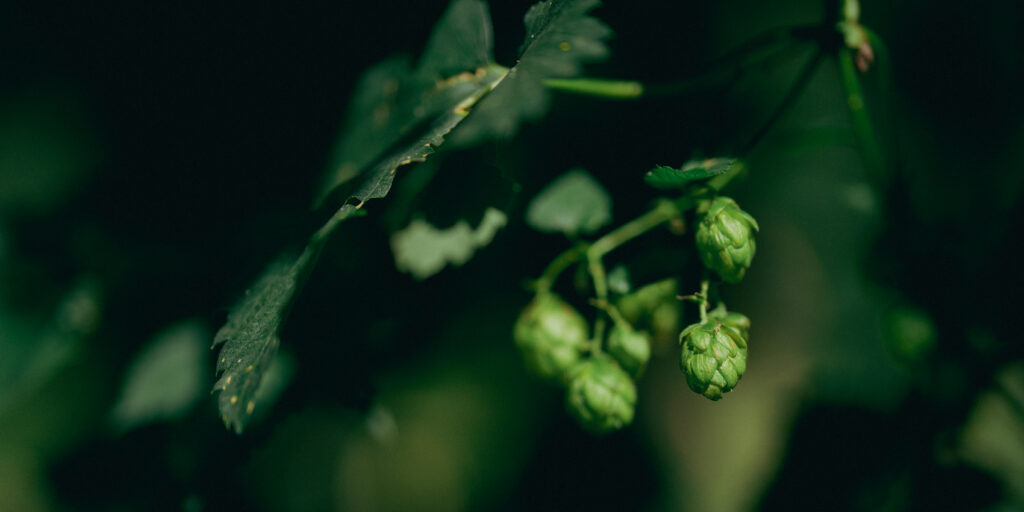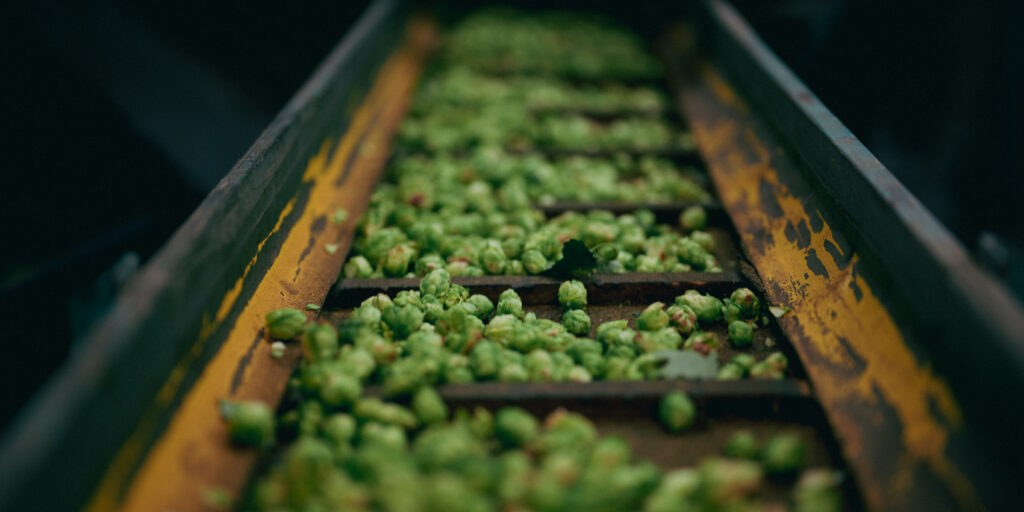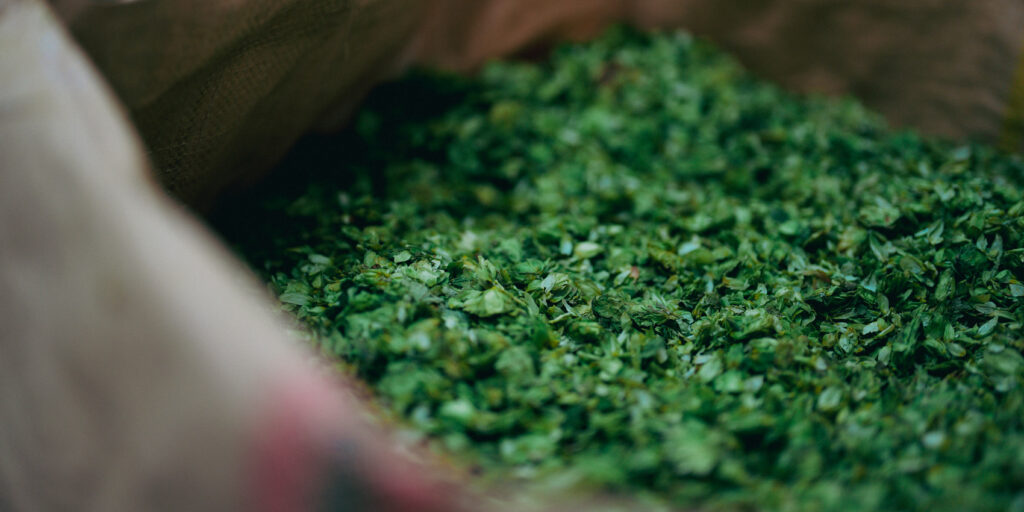Hop farming is an integral part of the brewing industry, and it all starts with a hop breeding program. Hop breeding programs have been in place for centuries. They are responsible for developing the hundreds of hop varieties we know and love today. This post will dive into the nitty-gritty of hop breeding programs. Exploring how hops are bred, what qualities hop farmers look for, and more. Geterbrewed recently visited the Slovenian Institute of Hop Research & Brewing and spent incredibly valuable time with Dr. Iztok Joze Kosir. As the head of the Department for Agrochemistry and Brewing, he gave us insight into how hop breeding programs work.

What is hop breeding?
Hop breeding is selectively breeding hop plants to develop new varieties with specific traits and qualities that brewers desire. It involves carefully selecting and crossbreeding different hop plants to create offspring with desired characteristics, such as unique flavours, aromas, and alpha acid levels.
In hop breeding, the focus is on selecting hops for brewing that will enhance the flavours and aromas of beer. Different hop varieties can contribute different characteristics to beer, such as citrusy, piney, floral, or spicy notes. By breeding hops with specific flavour profiles, hop breeders can provide brewers with a wide range of options to create unique and exciting beers.
The process of hop breeding is not a quick one. It takes several years of testing and evaluation to determine the quality and characteristics of a new hop variety. Breeders carefully monitor the plants throughout their lifecycle, evaluating disease resistance, yield potential, and brewing characteristics. This rigorous evaluation ensures that only the best hop varieties are available.
Hop breeding programs have a long and rich history, dating back centuries. Farmers set up The Slovenian Hop Institute some 70 years ago to ensure that they took a strategic approach to growing hops. Ensuring the industry in the country is protected for years to come. The goal has always been to develop new varieties that can meet the ever-evolving needs of the brewing industry. Today, hop breeding continues to push the boundaries of flavour and aroma in beer. The future looks promising with the development of new techniques, such as genomic selection, that can accelerate the breeding process.
The history of hop breeding programs
The history of hop breeding programs dates back centuries. Intending to select hops for brewing that enhance the flavours and aromas of beer. Throughout history, hop breeders have worked tirelessly to create new varieties that meet the ever-evolving needs of the brewing industry.
The origins of hop breeding can be traced back to Europe in the 17th century. At that time, hop cultivation was predominantly centred in England and Germany. However, the availability of hop varieties was limited. Brewers were eager to discover new flavours and aromas to incorporate into their beers. This drove the development of hop breeding programs. Breeders began selectively breeding hop plants to create offspring with desired characteristics. Over the years, hop breeding programs have become more sophisticated and refined. Breeders have used techniques like crossbreeding to create new hop varieties with unique flavour profiles. The process involves carefully selecting parent plants with specific traits and crossing them to produce offspring that inherit those desired qualities.
Milestone
One significant milestone in the history of hop breeding was the discovery of alpha acids, responsible for beer’s bittering properties. This led to a focus on breeding hops with high alpha acid levels as brewers sought to balance malt sweetness with bitterness. As a result, American hop varieties like Cascade, Centennial, and Citra were developed, known for their bold and distinctive flavours. Styrian varieties like Aurora & Styrian Goldings have been the stable hops coming from Slovenia. In recent years, hop breeding programs have expanded their focus beyond bitterness and have prioritized aroma and flavour. This has resulted in the creation of American hop varieties like Amarillo, Simcoe, and Mosaic, known for their tropical, citrus, and piney notes.
The Slovenian hops are renowned for their fine aroma. This term was lost on me until I had the opportunity to discuss this with Slovenian hop farmers and Dr. Iztok Joze Kosir. They are historically used in British ales and Belgian beer styles. Still, recent additions such as Styrian Dragon include floral citrus, grapefruit, lemon, berries, rose, and tropical fruit notes in aroma hops.

How hop breeding programs work
Hop breeding programs work through a carefully orchestrated process of selecting hops for brewing that will enhance the flavours and aromas of beer. The goal is to create new hop varieties with specific traits and qualities that brewers desire.
- The first step in the process is to identify the parent plants that will be used for breeding. Breeders carefully select hops with desirable characteristics, such as unique flavours, aromas, and alpha acid levels. These parent plants serve as the foundation for creating new hop varieties.
- Next, breeders cross-pollinate the chosen parent plants to produce offspring with desired traits. This involves transferring pollen from one plant’s male flower to another’s female flower. The resulting seeds are then collected and planted, giving rise to a new generation of hop plants.
- Throughout the breeding process, the plants are closely monitored and evaluated. Breeders assess disease resistance, yield potential, and brewing characteristics. This rigorous evaluation ensures that only the best hop varieties are available.
- Once the plants have reached maturity, breeders conduct extensive testing and sensory evaluation to determine the quality and characteristics of the new hop variety. This includes brewing test batches with the hops and assessing the resulting flavours and aromas in the beer.
- The final step in the hop breeding process is to release the new variety to the brewing industry. This involves working with hop farmers to propagate and distribute the plants, making them available for brewers to incorporate into their recipes.
Factors to consider
There are several factors that breeders take into consideration. These factors play a crucial role in determining the qualities and characteristics of a new hop variety. Let’s take a closer look at some of the critical factors that hop breeders consider:
- Flavour and Aroma: One of the most essential factors in hop breeding is the flavour and aroma profile of the hop. Breeders aim to create hop varieties with unique and distinctive flavours and aromas that can enhance the overall taste experience of beer. Whether it’s citrusy, floral, piney, or spicy, each hop variety brings its own flavour and aroma to the table.
- Alpha Acid Content: Alpha acids are responsible for the bittering properties in beer, so breeders carefully select parent plants with desirable alpha acid levels. This helps brewers achieve the perfect balance between bitterness and sweetness in their beer recipes.
- Disease Resistance: Hop plants are susceptible to various diseases and pests, so breeders prioritize disease resistance in their breeding programs. Breeders can help farmers grow healthier and more resilient hop crops by developing hop varieties resistant to common diseases.
- Yield Potential: Hop breeders also consider the yield potential of a new variety. Higher yields mean more hops can be harvested from each plant, which is vital for farmers and brewers. Breeders strive to create hop varieties that can produce abundant and consistent yields.
- Growing Conditions: Different hop varieties have different requirements regarding climate, soil, and other growing conditions. Breeders consider these factors to ensure the new hop varieties are suitable for cultivation in various regions.
By carefully considering these factors and more, hop breeders can develop new hop varieties that meet the needs and preferences of brewers. These considerations help drive innovation in the brewing industry and contribute to creating exciting and unique beers.
Examples of successful hop varieties created
Regarding successful hop varieties created through breeding programs, the Slovenian Institute of Hop Research & Brewing has quite the collection. They have compiled an impressive catalogue, such as a folder filled with inserted sheets, showcasing the diverse range of hop varieties that have been developed. Check out the links on their website.
Each variety is presented on its sheet, providing valuable information about its pedigree, the time of technological maturity, storage stability, and even morphological data. Additionally, the sheets include captivating photos of the plant, allowing brewers to visually appreciate the unique characteristics of each variety.
One crucial aspect that the catalogue highlights is disease resistance. Hop downy mildew, hop powdery mildew, and verticillium wilt are all diseases that can wreak havoc on hop crops. The catalogue provides data on the disease resistance of each variety, giving brewers peace of mind knowing that they are selecting hops that can withstand these threats.
Particularly interesting is the inclusion of a genetic dendrogram in the catalogue. This dendrogram illustrates the relations between the new and established domestic and foreign-produced varieties. It helps brewers understand the lineage and genetic connections between different hops, which can inform their decision-making process regarding recipe design.
Among the successful hop varieties created through Slovenian breeding programs, some noteworthy ones include Fox, Kolibri, Wolf, Cardinal, and Dragon. Each of these varieties brings unique flavours and aromas to the table. Allowing brewers to experiment and create beers that stand out from the crowd.
Overall, the catalogue of successful hop varieties created through breeding programs is a valuable resource for brewers. It provides a comprehensive overview of the options available. Empowering brewers to select hops that will elevate their beer recipes and satisfy the taste buds of beer enthusiasts.

Challenges and limitations
While hop breeding programs have undoubtedly revolutionized the brewing industry, they have their fair share of challenges and limitations. One of the primary challenges is the lengthy and intricate process of developing new hop varieties. It can take several years of testing and evaluation to determine the quality and characteristics of a new hop variety. This can frustrate breeders and brewers eager to access new flavours and aromas.
Another challenge is the unpredictable nature of plant genetics. Despite careful selection and crossbreeding, the offspring is not guaranteed to inherit the desired traits. It requires a lot of trial and error to find the perfect combination of parent plants that will yield the desired flavours, aromas, and brewing characteristics. This can result in a lot of wasted time and resources.
Additionally, hop breeding programs face climate and growing conditions limitations. Particular hop varieties may only thrive in specific regions, making introducing new varieties to areas with different climates challenging. This can limit the accessibility of specific hop varieties for brewers and restrict their ability to experiment with new flavours and aromas.
Furthermore, the demand for new hop varieties often outpaces the breeding programs’ development capacity. Brewers constantly seek innovative hops to create unique and exciting beers as the craft beer industry continues to grow and evolve. However, breeders can only produce a limited number of new varieties each year, leading to a bottleneck in the supply of novel hops.
Future of hop breeding and the brewing industry.
As the brewing industry continues to grow and evolve, the future of hop breeding holds exciting possibilities. Advancements in breeding techniques and the increasing demand for unique and innovative flavours in beer are shaping the future of hop breeding programs.
One promising development is the use of genomic selection in hop breeding. This technique allows breeders to analyze the DNA of hop plants and identify specific genes that contribute to desired traits, such as flavour and aroma profiles. This method allows breeders to expedite the breeding process and develop new hop varieties more efficiently.
Another area of focus for the future of hop breeding is sustainability. As the importance of sustainability in agriculture becomes increasingly recognized, hop breeders are working to develop varieties that are more resistant to pests and diseases, reducing the need for chemical pesticides. Additionally, breeders are exploring the potential for breeding hops that require less water and fertilizer, helping to conserve resources and minimize environmental impact. Furthermore, the future of hop breeding will continue to prioritize flavour and aroma. With the craft beer industry thriving and consumers seeking unique and exciting flavours, breeders will strive to create hop varieties with even more diverse and complex flavour profiles. The possibilities for new hop flavours are endless, from fruity and tropical notes to earthy and spicy undertones.